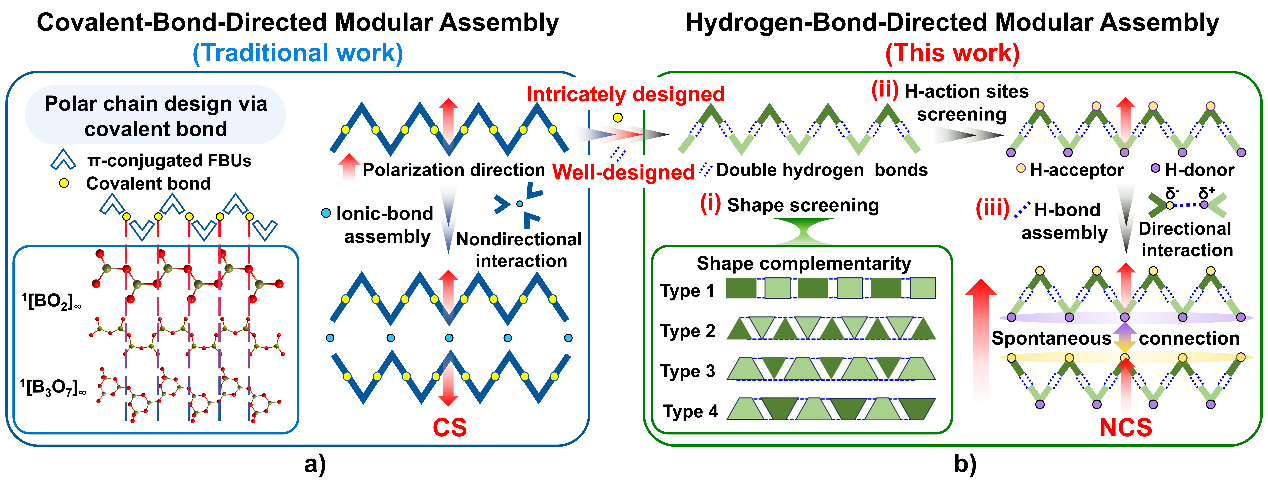Non-centrosymmetric (NCS) crystals, as a type of functional material with special symmetrical properties, can exhibit unique physical phenomena such as nonlinear optical effects and piezoelectric effects, and have become the core material basis for cutting-edge fields such as laser technology, optical communication, and quantum information. However, the design of the NCS structures is not straightforward because polar building blocks always pack in anti-parallel, head-to-tail arrangements, thus forming the centrosymmetric (CS) structure.
In a study published in Angew. Chem. Int. Ed, Prof. LUO Min's research group from the Fujian Institute of Research on the Structure of Matter, Chinese Academy of Sciences, introduced a predictive framework for the a priori design of NCS structures with tailored properties and obtained two new UV NLO materials, C(NH2)3C3H3O4 and C(NH2)3C4H5O4, which exhibited excellent linear and nonlinear optical properties.
The researchers constructed π-conjugated groups into polar 1D chains via hydrogen bonds (H-bonds) and integrated these chains into a 3D NCS framework through H-bonds. All these processes were spontaneously connected through donor–acceptor (D–A) pairing of H-bonds. However, to ensure the generation of the predicted structure, a strategy was proposed- Hydrogen-Bond-Directed Modular Assembly. This strategy contained three steps: screening π-Conjugated Group Geometries for Polar Chain Modules, selection of Interchain Interaction Sites, and spontaneous Self-Assembly of Chains.
Under the guidance of the pre-constructed strategy, the researchers selected three building units- C3H3O4−, C4H5O4−, and C(NH2)3+. Through shape complementarity, units were assembled into two 1D polar chain modules, [C(NH2)3C3H3O4]∞ and [C(NH2)3C4H5O4]∞. Due to the spatial distribution of H-bond donors and acceptors on opposing sides of the 1D chain modules, [C(NH2)3C3H3O4]∞ and [C(NH2)3C4H5O4]∞ spontaneously crystallized as two new UV NLO materials, C(NH2)3C3H3O4 and C(NH2)3C4H5O4.
Furthermore, C(NH2)3C3H3O4, C(NH2)3C4H5O4 exhibited excellent optical properties including second-harmonic generation efficiencies of 2× and 1× that of KDP, UV cutoffs at 215 and 228 nm, and birefringence values of 0.122 and 0.159 at 546.1 nm, respectively. This study provides a general, synthetically accessible platform for next-generation UV NLO materials and other functional non-centrosymmetric frameworks.

Illustration of the Research (Image by LUO’s group)
Contact:
Prof. LUO Min
Fujian Institute of Research on the Structure of Matter
Chinese Academy of Sciences
Email: lm8901@fjirsm.ac.cn